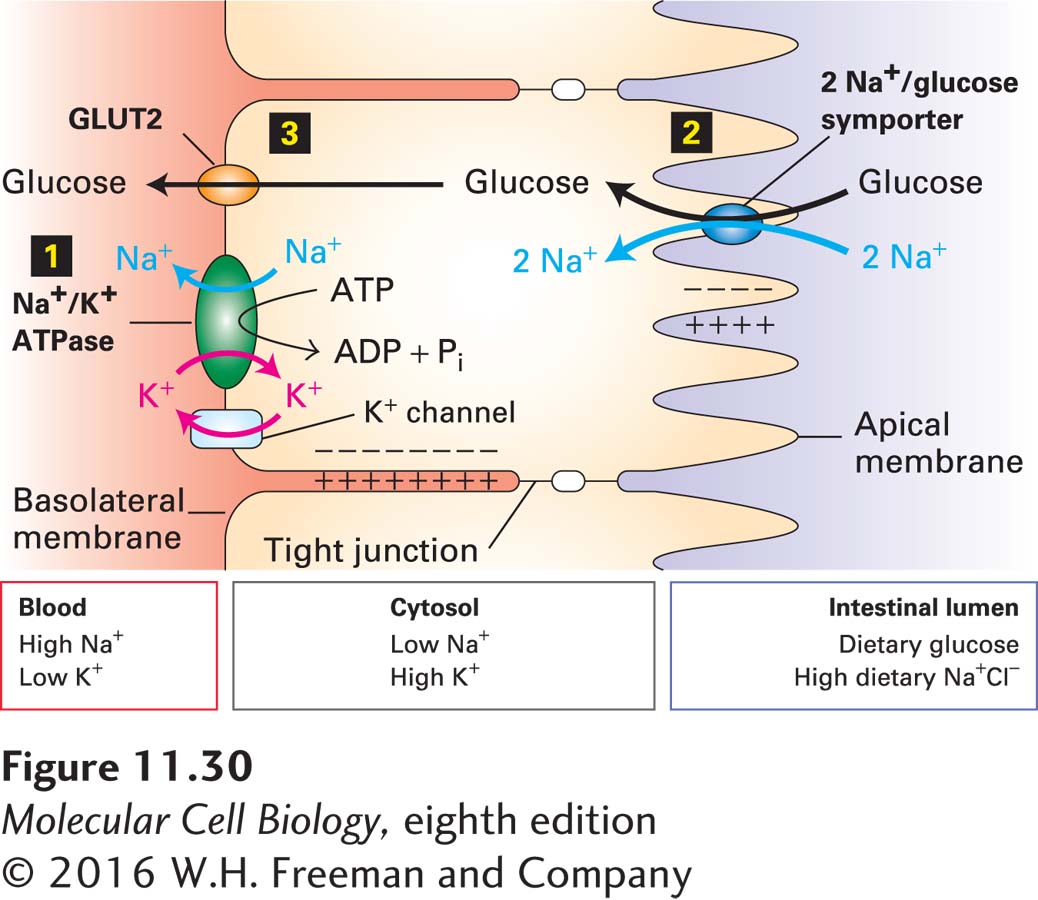11.6 Transcellular Transport
The previous sections have illustrated how several types of transporters function together to carry out important cellular functions. Here we extend this concept by focusing on the transport of several types of molecules and ions across polarized cells, which are cells that are asymmetric (have different “sides”) and thus have biochemically distinct regions of the plasma membrane. A particularly well-studied class of polarized cells includes many of the epithelial cells that form sheet-like layers (epithelia) covering most external and internal surfaces of body organs. (Epithelial cells are discussed in greater detail in Chapter 20.) Like many epithelial cells, an intestinal epithelial cell involved in absorbing nutrients from the gastrointestinal tract has a plasma membrane organized into two major discrete regions: the surface that faces the outside of the organism, called the apical, or top, surface, and the surface that faces the inside of the organism (or the bloodstream-facing side), called the basolateral surface, which is composed of the basal and lateral surfaces of the cell (see Figure 20-11).
Specialized regions of the epithelial-cell plasma membrane, called tight junctions, separate the apical and basolateral membranes and prevent many, but not all, water-soluble substances on one side from moving across to the other side through the extracellular space between cells. For this reason, absorption of many nutrients from the intestinal lumen across the epithelial cell layer and eventually into the blood occurs by a two-stage process called transcellular transport: import of molecules through the plasma membrane on the apical side of intestinal epithelial cells and their export through the plasma membrane on the basolateral (blood-facing) side (Figure 11-30). The apical portion of the plasma membrane, which faces the intestinal lumen, is specialized for absorption of sugars, amino acids, and other molecules that are produced from food by multiple digestive enzymes.

FIGURE 11-30 Transcellular transport of glucose from the intestinal lumen into the blood. The Na+/K+ ATPase in the basolateral surface membrane generates Na+ and K+ concentration gradients (step 1). The outward movement of K+ ions through nongated K+ channels generates an inside-negative membrane potential across the entire plasma membrane. Both the Na+ concentration gradient and the membrane potential are used to drive the uptake of glucose from the intestinal lumen by the two-Na+/one-glucose symporter located in the apical surface membrane (step 2). Glucose leaves the cell via facilitated transport catalyzed by GLUT2, a glucose uniporter located in the basolateral membrane (step 3).
